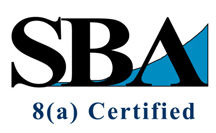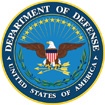 Technology and Engineering Services
Technology and Engineering Services
COTS & ERP Implementation
Enterprise Resource Planning (ERP) system implementation is often time consuming and costly. Furthermore, ERP implementations are often prone to failure due to the complicated nature of modernizing and integrating the systems. Our successes with implementing and updating ERP systems has taught us that the following actions are critical for a successful implementation:
- Create a well-organized implementation plan and closely monitor that plan, schedule, and risks;
- Create an implementation team to include stakeholders and the most experienced consultants and subject matter experts (SMEs);
- Use successful implementation schedules, and the resources each schedule requires, to form the basis of an ERP implementation;
- Work closely with the customer to properly match ERP requirements to the appropriate Commercial Off The Shelf (COTS) vendor;
- Educate the customer and all stakeholders about the key business practices the ERP will change once it is implemented;
- Provide customers and stakeholders with ample training and assistance to become familiar with new business methods introduced by the ERP; and
- Implement the ERP with a maintenance strategy in place.
An effective ERP implementation results in stream-lined work flow processes tuned specifically to an organization’s unique business processes. That said, there must be a balance struck between the COTS out-of-the-box business processes and the organization’s unique process requirements – that balance is dependent upon the organization’s willingness to modify its practices, the vendor’s COTS product, and the skill of the integrator and SMEs assisting with the initial implementation and successive upgrades.
Our consultants and SMEs collaborate with ERP vendors to employ their latest features and best practices, backed by PMBOK standards, to greatly increase the likelihood of successful implementations. Moreover, we refine our ERP implementation plans by adopting vendor-specific methodologies such as Oracle’s Unified Method (OUM), SAP’s Accelerated SAP (ASAP) or Microsoft’s Dynamics Sure Step.
Our senior managers and SMEs are Certified Government Financial Manager IT specialists, Certified Public Accountants, and Certified Project Manager Professionals. They have the technical and functional expertise important to implementing the following ERP modules:
- General Ledger,
- Accounts Payable,
- Financial Reconciliation,
- Disaster Loan Application Processing,
- Grants Management,
- Programmatic and Administrative Transaction Processing for Medicare Payments,
- Human Resources Management, and
- Payroll Processing.
Network Engineering:
Our network solution architects, engineers, and technicians have the needed skills and certifications to help our customers realize the full potential of their network hardware and system software investments. Our experience includes the following:
- Experienced Network/Security Analysis Team
- Cisco Routing and Switching
- Juniper Routing and Switching
- Firewall Design
- Cisco ASA/PIX/FWSM
- Juniper Netscreen/SRX
- Checkpoint
- Crossbeam
- Sidewinder
- IDS/IDP Design/Implementation
- Network Optimization
- Riverbed
- Cisco WAAS
- Wireshark/Riverbed Cascade
- OpNet
SharePoint Implementation:
Our successful SharePoint implementations often result in an increase in an organization’s productivity. If properly introduced and implemented, we believe that SharePoint’s key features can be used to realize true cost savings. Those key features may include:
- Agency specific intranet portals to connect small groups and consolidate knowledge within specific business areas;
- Document and version control standards that adhere to ISO standards for document and record control;
- Advanced search functionality across an organization making new ideas and concepts immediately available for review and improvement; and
- Advanced business intelligence solutions on the desktop to increase the likelihood that businesses will realize the promise of the information stored within their data systems.
Our SharePoint Subject Matter Experts (SMEs) understand that providing an effective SharePoint solution is greater than merely setting up a SharePoint server farm and turning over the implementation to the customer. Our methodology for SharePoint implementation addresses the need to keep the business benefits in the forefront and to work with customers to ensure that they realize the benefits of their SharePoint investment.
Our SMEs are also familiar with the complexities of SharePoint site maintenance, content management, and workflow. We understand and employ best practices and we are adept at working with other contractors and stakeholders outside of the primary support organization.
Our successful SharePoint implementation methodology includes the following important elements:
- Obtain and maintain executive sponsorship – the management team must support the implementation and communicate the benefits of the initiative to the rest of the organization’s workforce;
- Define the vision and goals – create a clear business plan outlining high-level goals and a vision for the implementation’s end result;
- Get the right people involved – hire SharePoint experts and pull technical employees into the implementation from the start to act as data stewards;
- Schedule training – provide user training for your employees with some employees receiving additional training as administrators and data stewards;
- Define standards and policies – create SharePoint standards and data policies that dovetail with your governance plans;
- Foster culture and adoption – promote the collaborative benefits that SharePoint provides; and
- Establish feedback groups – establish SharePoint user groups to share feedback and best practices to create collaborative applications and maintain data stewardship.
Data Warehousing and Business Intelligence:
Data warehousing is the process of creating an architecturally-based information management solution to enable analytics and information processing. The key concept behind a data warehouse is that it breaks down the barriers created by non-enterprise, process-focused applications and consolidates information into a single view for users to access. Business Intelligence (BI) is defined as the information that is pulled out of a data warehouse.
A data warehouse has the following characteristics:
- It provides centralization of corporate data assets;
- It is contained in a well-managed environment;
- It has consistent and repeatable processes for loading data from corporate applications;
- It is built on an open and scalable architecture that can handle future expansion of data; and
- It provides tools that allow its users to effectively process the data into information without a high degree of technical support.
Our data warehouse and BI subject matter experts have solid experience implementing enterprise BI architectures from financial-based data warehouses. The BI architectures include interactive dashboards, ad-hoc queries, mobile analytics, notifications and alerts, enterprise and financial reporting, scorecard and strategy management, unstructured search capability, and collaborative analytics. Our subject matter experts have successfully implemented warehouses using the following enterprise warehouse products:
- Oracle’s Business Intelligence Enterprise Edition;
- Microsoft’s Business Intelligence;
- IBM’s Cognos;
- SAP AG’s Business Objects; and
- SAS Institute’s Business Intelligence application suite.
















